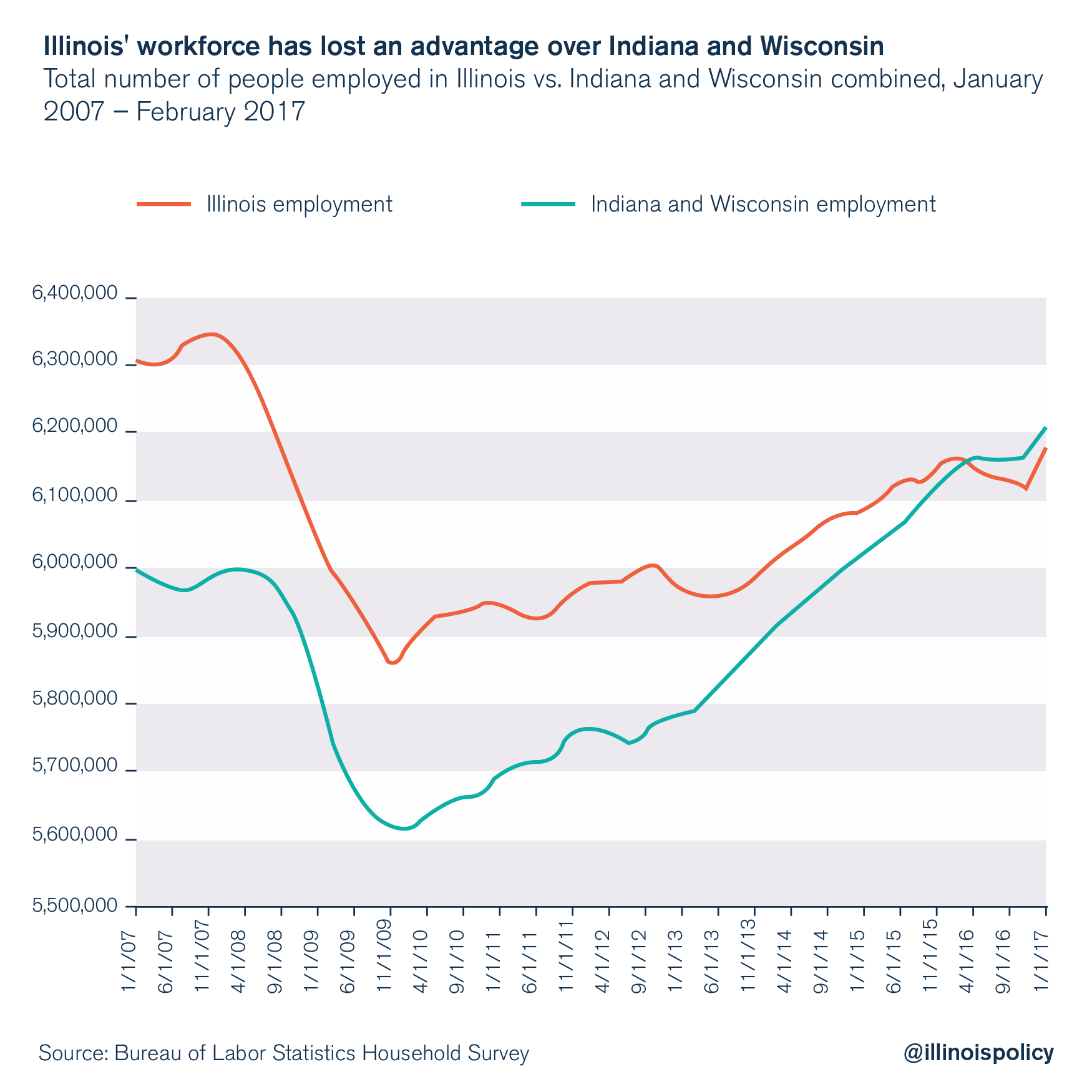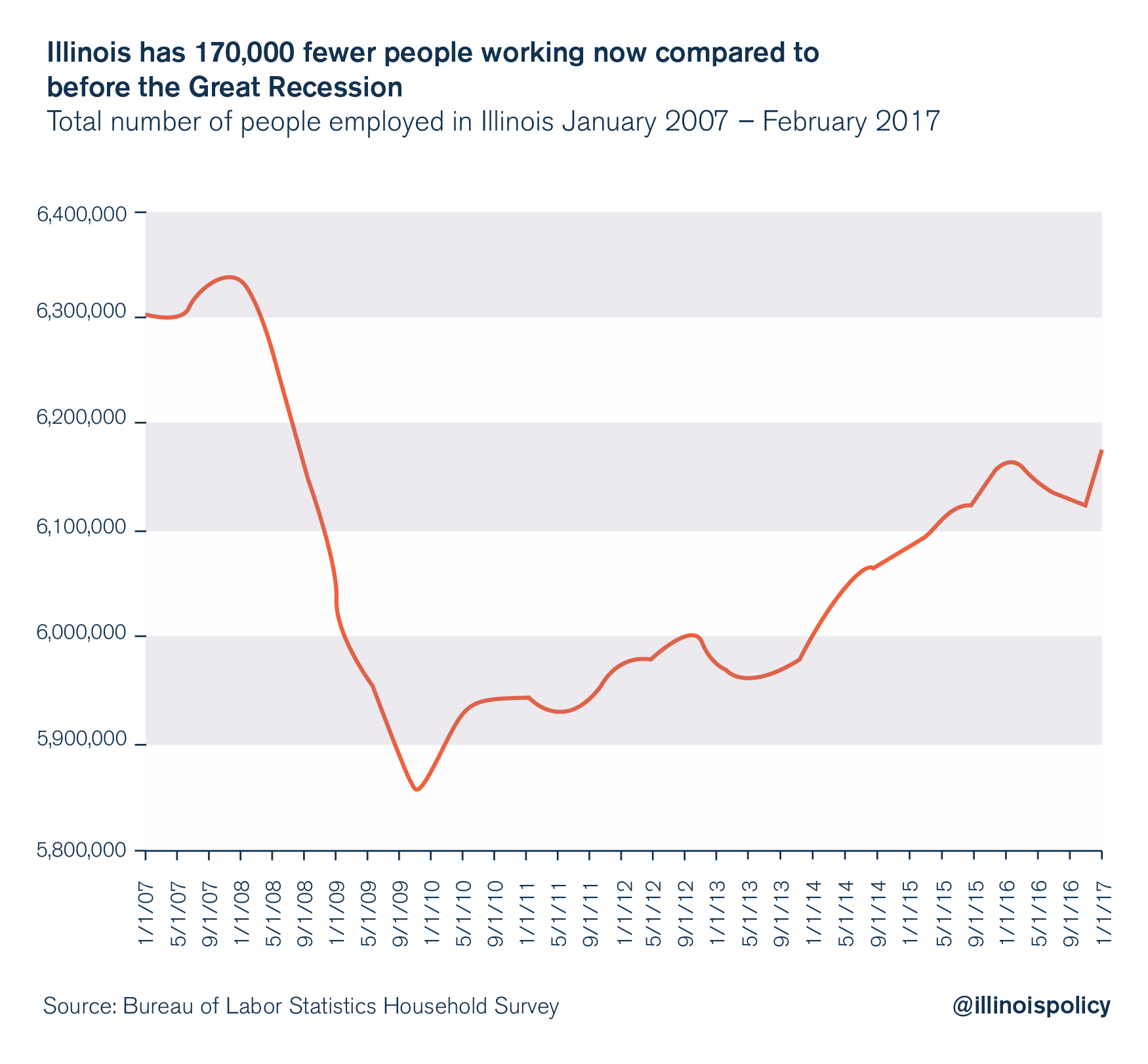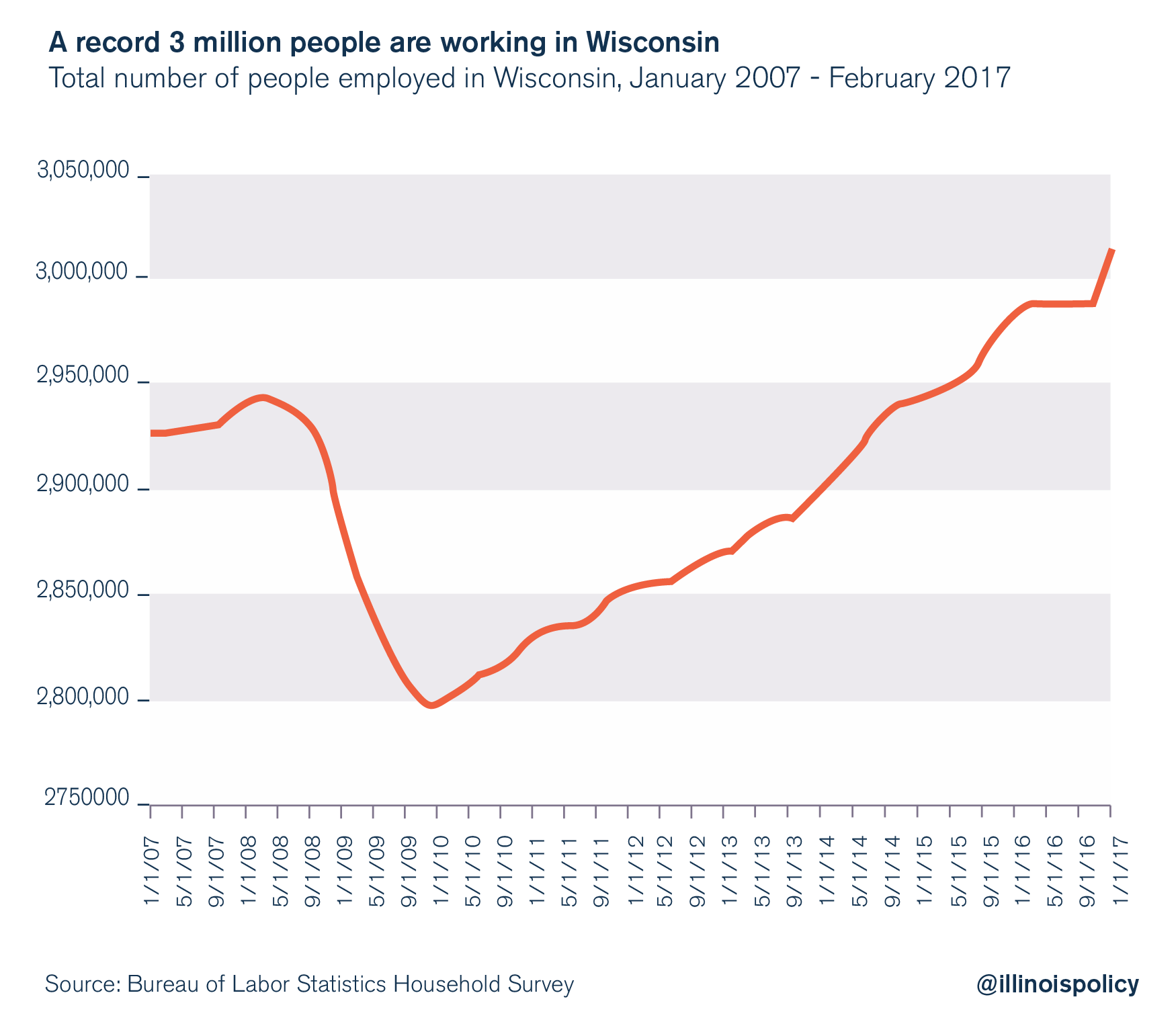Wisconsin and Indiana hit new all-time highs for number of people working
In the last decade, Illinois’ economy and the economies of neighboring states have gone in opposite directions, with more people now working in Wisconsin and Indiana combined.
Illinois had 350,000 more people working in the state than in Indiana and Wisconsin combined just 10 years ago, according to the Bureau of Labor Statistics. But today fewer people are working in Illinois than in Indiana and Wisconsin combined.
Because of Illinois’ rocky road to economic recovery, the state has failed to recoup the number of working people the state had before the Great Recession. On the other hand, Indiana and Wisconsin – which have tried a new model of governance and enacted economic reforms – have both surged to new all-time highs in the number of people working in their states, as they’ve piled up more new jobs and employment, according to data from the Bureau of Labor Statistics.
Illinois had 6,345,000 people working before the Great Recession hit, compared to just under 6 million in Indiana and Wisconsin combined. That comparison has flipped as the working environment in Indiana and Wisconsin has improved while it has deteriorated in Illinois. Indiana and Wisconsin combined now have more people working than Illinois because they have had much stronger recoveries from the Great Recession. Only 6,176,072 people are working in Illinois compared to 6,202,040 in Indiana and Wisconsin combined – giving Indiana and Wisconsin a 26,000 working person advantage over Illinois.

Illinois’ workforce has been slow to recover from the Great Recession. There are still 170,000 fewer people working in Illinois now compared to before the Great Recession. This leaves Illinois as one of the few states to not recover the working population it had 10 years ago. One of the reasons for this is because hundreds of thousands of working age adults have fled the state.

The recovery has looked very different for both Indiana and Wisconsin. A resurgent auto sector and a commitment to economic reforms bolstered the Hoosier State’s recovery. In recent years, Indiana reformed government unions, transformed government services, froze property taxes, controlled workers’ compensation costs, enacted Right-to-Work, managed pension costs and lowered taxes, all while achieving budget surpluses. A record-high number of people are working in Indiana today, and the state’s unemployment rate is 4.1 percent.

Wisconsin charted a similar path and achieved successful results. Since the Great Recession ended, Wisconsin politicians have reformed government unions, cut income and property taxes, enacted Right-to-Work, controlled pension costs and set the path for balanced budgets and lower taxes in the future. Wisconsin has a record number of people working in the state, and the Badger State’s unemployment rate stands at 3.7 percent.

Illinoisans have responded to their state’s failures by voting with their feet and opting to live in Indiana and Wisconsin year after year. Many of the people leaving Illinois for surrounding states are prime working-age adults.
The flow of Illinoisans into Indiana has become a flood. Illinois now loses 20,000 people per year to Indiana, on net, after averaging a loss of 12,000 people per year over the last decade.
Wisconsin has experienced a similar surge of emigrants from Illinois, capturing 11,500 Illinoisans on net in the most recent year of data. Wisconsin is also experiencing an acceleration of in-flow from Illinois after averaging a gain of 8,600 Illinoisans per year over the last decade.
Indiana and Wisconsin prove that good governance and structural reforms can result in better outcomes for workers and families all at a lower cost to taxpayers. Illinois needs to follow suit. But until Illinois politicians can break the habit of overspending and avoiding much needed structural reforms, the Land of Lincoln is going to be left behind as neighboring states surge ahead to capture the future.
